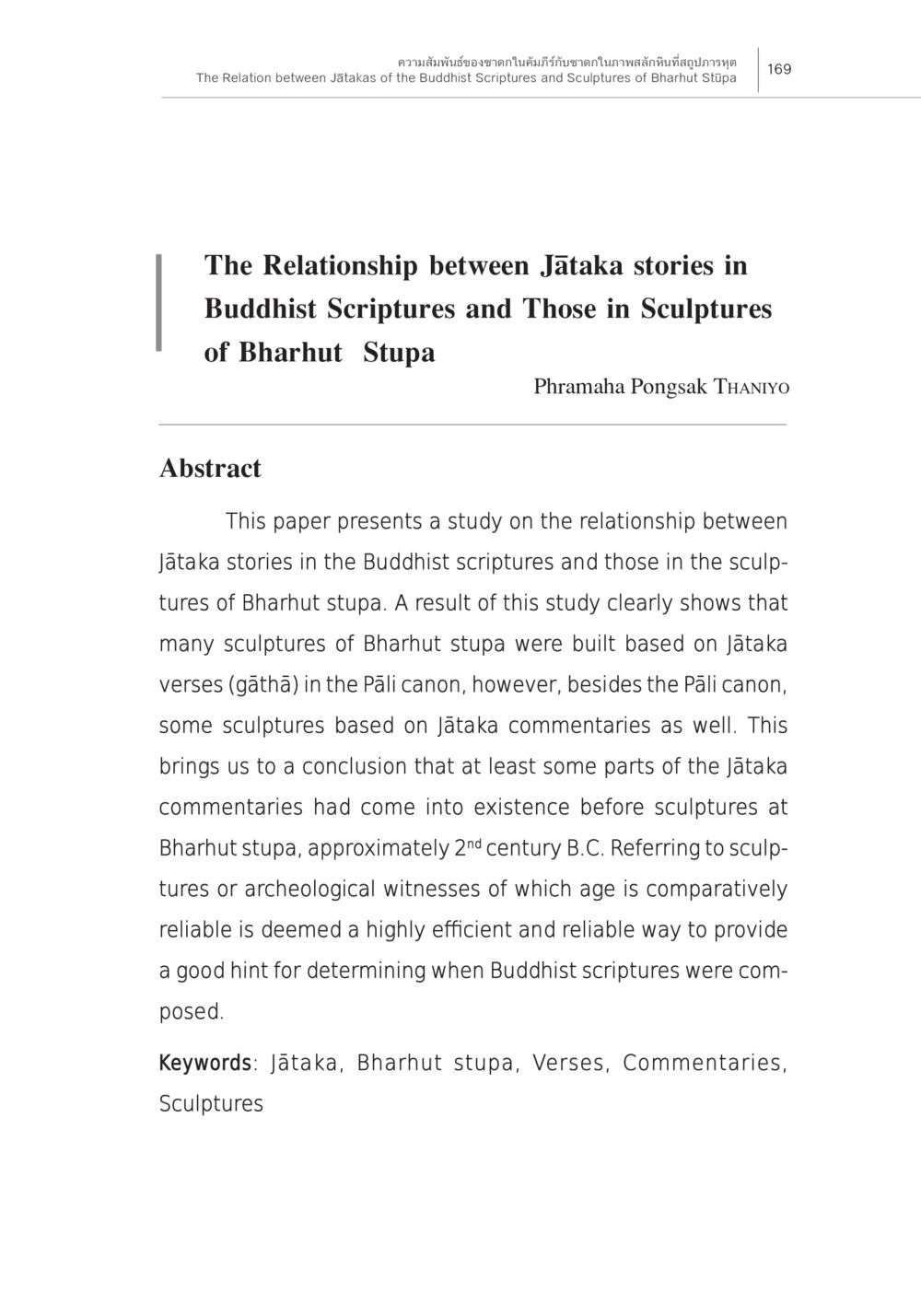The Relationship between Jātaka Stories in Buddhist Scriptures and Bharhut Stupa Sculptures : หน้า 3/33
ความสัมพันธ์ของชาดกในคัมภีร์กับชาดก ในภาพสลักหินที่สถูปภารหุต : หน้า 3/33 Exploring the connection between Jātaka stories in scriptures and Bharhut stupa sculptures, revealing historical insights into Buddhist texts.
0 ครั้ง

สรุปเนื้อหา
This study delves into the intricate relationship between the Jātaka stories found in Buddhist scriptures and the sculptures at Bharhut stupa. It identifies that many of these sculptures are rooted in Jātaka verses from the Pāli canon, while others draw inspiration from Jātaka commentaries. The research posits that certain Jātaka commentaries may have existed prior to the sculptures, dating back to the 2nd century B.C. Analyzing these sculptures and archaeological evidence provides valuable insights into the timeline of Buddhist scripture composition, offering a reliable method for understanding the historical context of these texts.
หัวข้อประเด็น
-Jātaka stories
-Historical relationship
-Bharhut stupa
-Pāli canon
-Archaeological evidence
-Buddhist scriptures

































